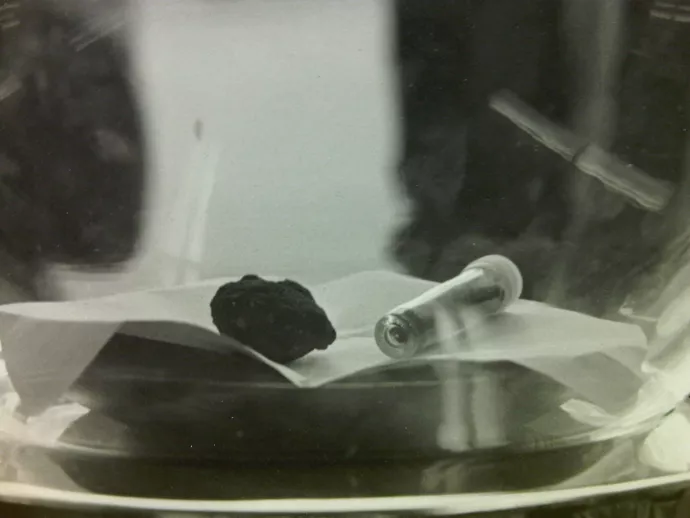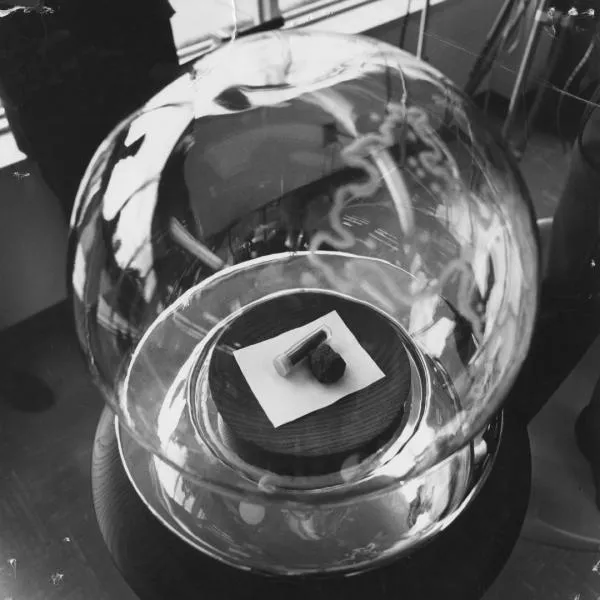
A Blastoff from the Past
In 1969, Erindale College (as it was then known) had an out-of-this-world encounter when it received lunar rock samples collected by three Apollo 11 astronauts.
A research team led by physics professor David Strangway analyzed the material for its magnetic properties. Strangway, who was 35 at the time, was one of approximately 140 scientists from around the world who received the samples from the National Aeronautics and Space Administration (NASA).
The astronauts on the Apollo 11 mission collected 50 pounds of material to be brought back to earth on July 24, 1969. The samples were kept quarantined in Houston for a month to avoid contamination before being declared “germ-free” and dispersed to the various international researchers.
Prior to becoming a faculty member at U of T, Strangway worked at Massachusetts Institute of Technology (MIT) in the geology and geophysics department. He was assigned the lunar-rock project while still employed at MIT, and so he was able to carry on the research despite the fact that he had left.
In studying the samples, Strangway focused on two particular aims: examining the lunar materials’ general magnetic properties; and to see if remnants of a past magnetic field could be detected. The project, with all the data collected from the various scientists studying the samples, was attempting to shed some light on the origin of the moon.

Construction for the appropriately nicknamed “Lunar Labule” started in late January and was completed in early May, narrowly avoiding a strike that stalled most Mississauga campus construction projects that spring. The laboratory was a seven-room building specifically erected on campus for this research project, and it was constructed of aluminum, brass, concrete and wood to further reduce magnetic interference.
The way the location was described at the time was “deep in a pine forest,” and it was outfitted with more than $100,000 worth of technical equipment, including a “magnetometer”, which could give readings to one-hundredth of a per cent.” The building, which still stands on campus along the Principle’s Road (it is referred to as the Paleomagnetic Lab), has been commemorated with a moon-shaped light.
The samples were displayed for two days over Thanksgiving weekend in the North Building, and it drew crowds of over 3,000 people who stood in line for hours to get a glimpse of the moon material. The 21-gram rock, which was a little smaller than a golf ball, and a thimbleful of moon dust (approximately five-grams worth) were showcased in a unique crystal orb designed by Henry Birks and Sons Ltd. specifically for the occasion.
The samples were also on display at Erindale in 1973 for a science open house, where an even larger crowd, approximately 4,000 people, came out to view the material.
The specimens, which were later returned to NASA, originally came to Mississauga with Strangway – in his briefcase – after a return trip from Houston. The airport customs declaration, which Strangway said he was going to frame, read: “No. of packages: one; Contents: Moondust; Appraised value: NCV (no commercial value); Rate of duty: Free; Amount of duty: NIL; Sales Tax: Exempt; Place of Origin: Moon.” Value of excitement and recognition the samples brought to the campus: Priceless.

Carla DeMarco is the Research Communications & Grants Manager in UTM’s Office of the Vice-Principal, Research. This article was originally published in May 2007.
